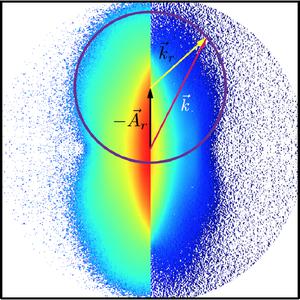Our article was selected as 2019 Editor's Choice Article
31 January, 2020
Our article "Atomic-resolution imaging of carbonyl sulfide by laser-induced electron diffraction" was selected as 2019 Editor's Choice Article by the Journal of Chemical Physics. In addition, our collaborator Arnaud Rouzée was awarded the 2020 Editor's Choice award for this joint research work.
We are proud and happy to announce that our publication "Atomic-resolution imaging of carbonyl sulfide by laser-induced electron diffraction" was selected as 2019 Editors' Choice article by the Journal of Chemical Physics. The Editors' Choice collection contains articles, hand-selected by the editors, which are recognized as the most innovative and influential articles of 2019. In addition, our collaborator Arnaud Rouzée was awarded the 2020 Editor's Choice award by the Journal of Chemical Physics for this joint research work. In our article, the self-imaging method of laser-induced electron diffraction (LIED) was utilized to image the equilibrium geometric structure of the carbonyl sulfide molecule (OCS) with picometer spatial resolution. In the LIED method, the molecules own electron from the highest-occupied molecular orbital (HOMO) is used to image the molecular structure. The molecule is ionized by using an intense, ultrashort mid-infrared laser pulse, that leads to the release of an electron from the HOMO through tunnel-ionization. In the course of the propagation of the free electron wavepacket, part of the electrons eventually return to the parent ion when the laser field reverses its sign and can elastically rescatter from the cation. The structural information of the molecule at the moment of rescattering is imprinted in the angle-resolved photoelectron momentum distributions that are recorded. In contrast to other experiments employing LIED so far, in our work we used a velocity-map imaging spectrometer (VMIS) to record the photoelectron momentum distributions. Provingthat such an experiment can be carried out by using a VMIS is important since the required time for such an experiment turns out to be orders of magnitude smaller compared to other experimental methods utilized so far.
In the present work, the bond lengths of the molecule were retrieved with a precision better than 5 pm. Furthermore it was shown, that the molecule stays linear in its equilibrium geometry over the period of several femtoseconds. The latter finding proves to be of particular importance since it sets the starting point for further investigations on time-resolved measurements of the structure and dynamics of OCS during photochemical reactions
